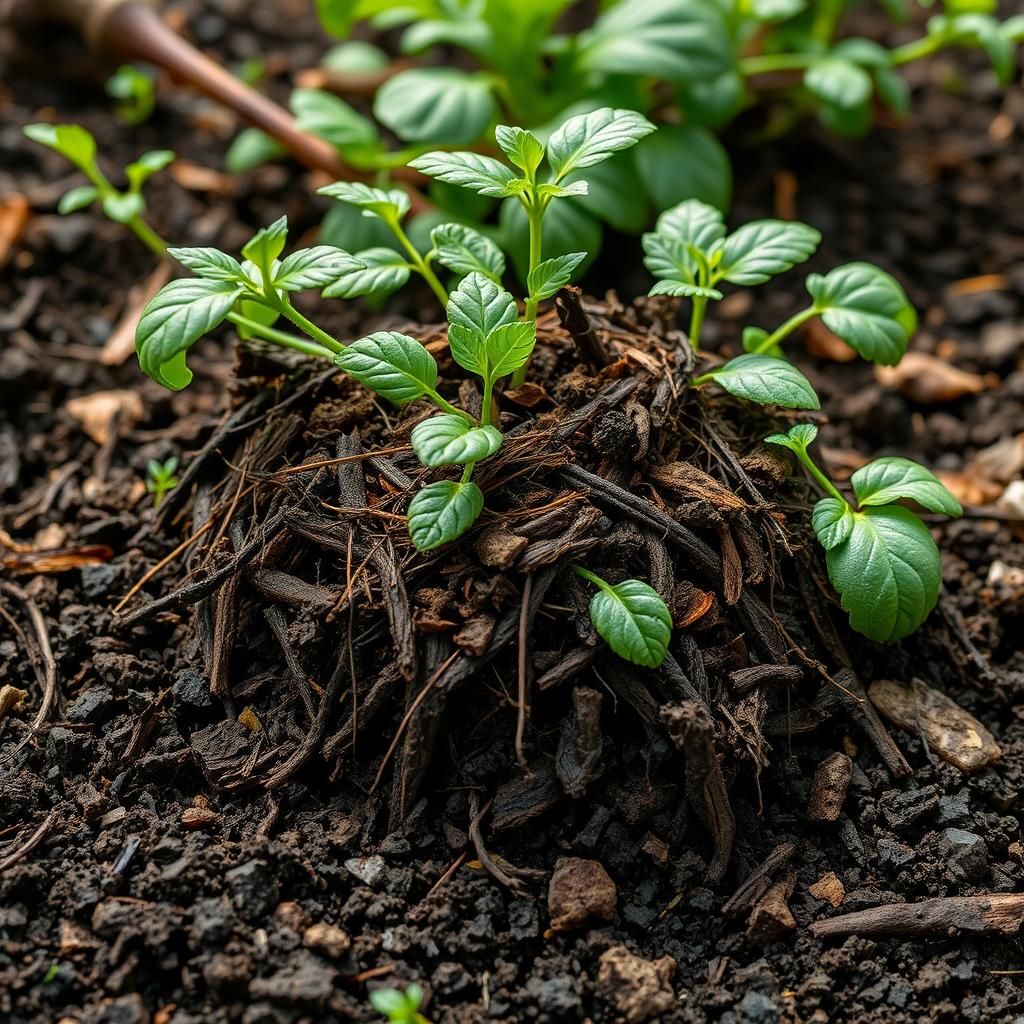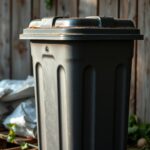Should Compost Be Kept Wet or Dry? Essential Tips for Perfect Composting

Composting is an essential practice for sustainable gardening and waste reduction. However, one of the most debated questions among compost enthusiasts is whether compost should be kept wet or dry. The right moisture level is crucial for the decomposition process, impacting the efficiency of nutrient breakdown and the development of beneficial microorganisms. In this article, we will explore the importance of moisture balance in composting, providing essential tips to achieve the ideal conditions for perfect compost. Whether you're a novice gardener or an experienced composter, understanding the moisture needs of your compost will lead to healthier plants and a thriving garden ecosystem.
Should Compost Be Kept Wet or Dry?
Maintaining the right moisture level in your compost is crucial for the decomposition process. Compost should ideally be kept moist, resembling a wrung-out sponge; too much water can lead to anaerobic conditions, producing unpleasant odors and slowing down the breakdown of materials. Conversely, if compost is too dry, microbial activity decreases, halting the breakdown of organic waste. Regularly checking the moisture content and adding water or dry materials as needed ensures a balanced environment where microorganisms can thrive, thus accelerating the composting process and producing high-quality humus.
Importance of Moisture in Composting
Moisture is essential in the composting process as it facilitates the activities of microorganisms that break down organic material. Without sufficient moisture, these beneficial bacteria and fungi cannot survive, leading to an ineffective compost mixture. Proper moisture levels support the overall health of the compost and improve nutrient availability, ultimately contributing to a richer end product.
Indicators of Compost Moisture Levels
To determine if your compost is adequately moist, you can conduct a simple squeeze test. Take a handful of compost and squeeze it firmly; if it releases water, it's too wet, and if it crumbles apart without forming a clump, it's too dry. Ideally, the compost should maintain a clump when squeezed but should not drip water. Monitoring these indicators helps you manage the moisture effectively.
How to Adjust Moisture Levels
Adjusting the moisture levels in your compost can be done by adding water or dry materials. If the compost is too wet, incorporate dry straw, shredded paper, or leaves to absorb excess moisture. On the other hand, if the compost is too dry, sprinkle small amounts of water regularly, being careful not to over-saturate it. These techniques ensure that your compost remains in the optimal moisture range for effective decomposition.
See also:
Effects of Overwatering on Compost
Overwatering your compost can lead to anaerobic conditions, resulting in a smelly, slimy mixture that is much less effective at breaking down organic matter. In such conditions, harmful bacteria may thrive, leading to unpleasant odors and potential pest attraction. It’s important to monitor moisture levels carefully and adjust accordingly to prevent overwatering and maintain a healthy compost environment.
Best Practices for Compost Moisture Management
Best practices for managing compost moisture include regular turning of the pile to promote airflow and even moisture distribution. It’s also beneficial to cover the compost with a tarp during rain to prevent excessive wetness. Additionally, if using worm bins, ensure that the bedding remains moist but not soggy. Consistency in checking and adjusting moisture levels will lead to better composting results over time.
| Moisture Level | Indicators | Adjustments |
|---|---|---|
| Too Wet | Water drips when squeezed | Add dry materials |
| Optimal | Clumps but does not drip | No adjustments needed |
| Too Dry | Crumbling apart | Add water gradually |
The Importance of Moisture Levels in Composting
Maintaining the right moisture level in your compost is crucial for creating a healthy composting environment. The ideal balance ensures that microbial activity flourishes, which is essential for breaking down organic materials. Compost that is too dry can slow down decomposition, while compost that is too wet can lead to unpleasant odors and a slimy texture. Regularly monitoring the moisture content and adjusting by adding water or dry materials will help achieve the perfect consistency necessary for optimal composting.
Recognizing the Signs of Dry Compost
Dry compost may show several signs, such as a crumbly texture and a lack of heat. When the compost pile feels light and does not clump together when squeezed, it indicates insufficient moisture. In addition, if you notice a decrease in worm activity and fewer visible microorganisms, it may be time to rehydrate your compost. Keeping an eye on these indicators can help maintain an ideal environment for decomposition.
Understanding the Dangers of Overly Wet Compost
When compost becomes overly wet, it can create an anaerobic environment, stifling the growth of beneficial aerobic bacteria that work to break down organic matter. Signs of this issue can include a foul odor reminiscent of rotten eggs and a slimy, black texture. Moisture levels in excess not only slow the composting process but can also attract unwanted pests. Therefore, achieving the right balance is vital to promoting a healthy compost ecosystem.
See also:
How to Properly Water Your Compost
The best way to water your compost is to do so gently and evenly to avoid creating any puddles. It’s recommended to add water gradually, allowing it to absorb evenly throughout the pile. A good rule of thumb is to keep your compost as damp as a wrung-out sponge, providing moisture without overwhelming the structure. This method ensures that all the materials receive the necessary hydration they need to decompose effectively.
The Role of Carbon to Nitrogen Ratio in Moisture Management
Balancing the carbon-to-nitrogen (C:N) ratio in your compost helps manage moisture levels effectively. Carbon-rich materials, often referred to as browns, help absorb excess moisture, while nitrogen-rich materials, called greens, provide essential nutrients. Striking the right balance between these components not only optimizes decomposition but also helps consistently maintain appropriate moisture. A C:N ratio of about 30:1 is generally ideal for healthy composting.
Using Ingredients Wisely to Control Moisture
Selecting the right ingredients can significantly influence moisture levels in your compost. Adding dry materials such as straw, dried leaves, or shredded paper can help absorb excess water, while fresh greens like grass clippings or kitchen waste can introduce moisture. Additionally, incorporating materials like wood chips can improve aeration and help regulate moisture over time. Careful selection and combination of these materials are crucial for maintaining an optimal moisture balance in your compost pile.
Questions from Our Readers
Should compost be kept wet or dry?
Compost should be kept moist but not overly wet. The ideal moisture level is akin to that of a damp sponge. This moisture is crucial for the microorganisms that break down organic material; however, too much water can lead to anaerobic conditions, which can generate bad odors and slow the composting process.
How do I know if my compost is too dry?
If your compost feels dry to the touch and crumbles easily, it is likely too dry. This can be tested by grabbing a handful of compost and squeezing it; if no moisture drips out, it needs water. Maintaining moisture helps ensure that the composting microorganisms remain active and effective in breaking down the materials.
See also:
What happens if compost is too wet?
When compost is too wet, it can become soggy and promote the growth of anaerobic bacteria, which can produce foul odors. Excess moisture can also prevent proper airflow, leading to a less efficient breakdown of organic matter. It’s important to strike a balance to keep the compost healthy and active.
How can I maintain the right moisture level in compost?
To maintain the right moisture level, regularly turn the compost to increase aeration and assess its moisture content. If it’s too dry, you can add water, while if it’s too wet, incorporating dry materials like straw or shredded paper can help absorb excess moisture. Regular monitoring is key to achieving a successful compost.

If you want to read more articles like Should Compost Be Kept Wet or Dry? Essential Tips for Perfect Composting, we recommend you check out our Compost category.
Leave a Reply
Related Articles